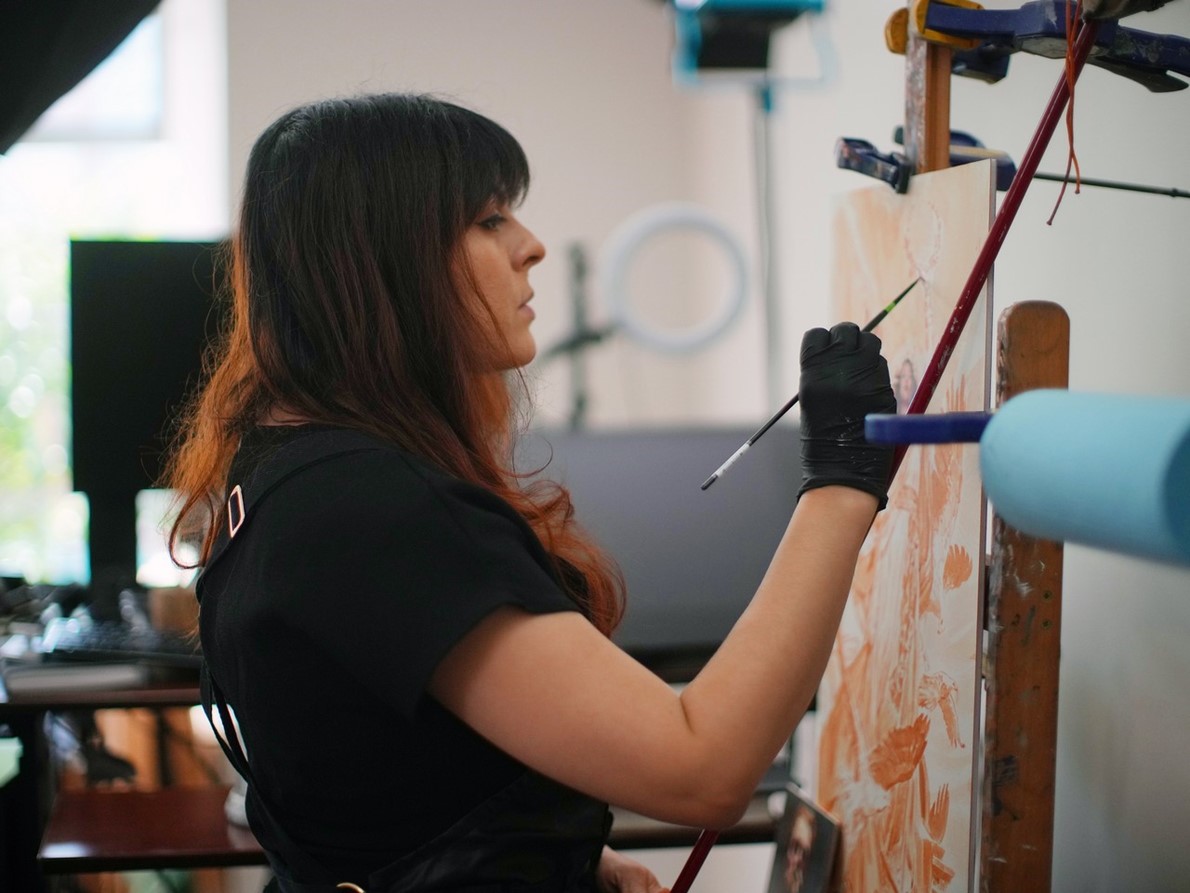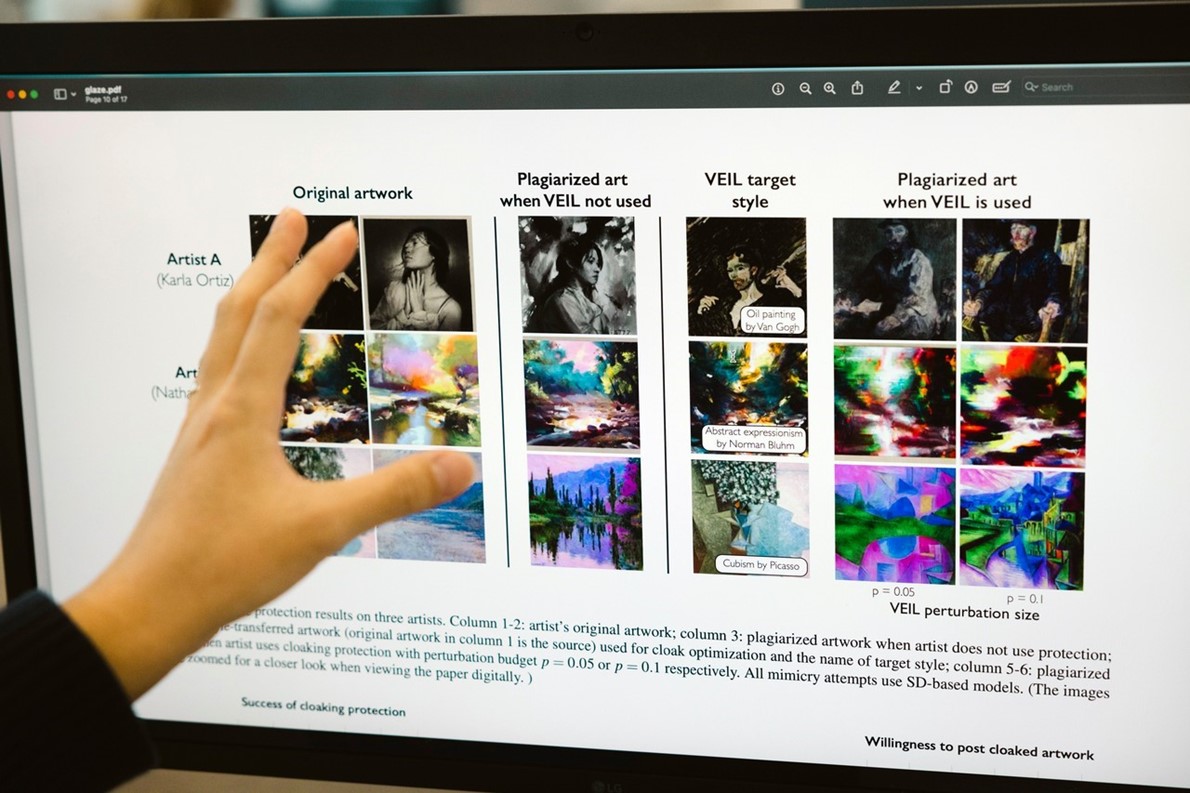Robots would come for humans’ jobs. That
was guaranteed. The assumption generally was that they would take over manual
labor, lifting heavy pallets in a warehouse and sorting recycling.
اضافة اعلان
Now significant advances in generative
artificial intelligence mean robots are coming for artists, too.
AI-generated images, created with simple
text prompts, are winning art contests, adorning book covers, and promoting
“The Nutcracker”, leaving human artists worried about their futures.
The threat can feel highly personal. An
image generator called Stable Diffusion was trained to recognize patterns,
styles, and relationships by analyzing billions of images collected from the
public internet, alongside text describing their contents.
Among the images it trained on were works
by Greg Rutkowski, a Polish artist who specializes in fantastical scenes
featuring dragons and magical beings.
Seeing Rutkowski’s work alongside his name
allowed the tool to learn his style effectively enough that when Stable
Diffusion was released to the public last year, his name became shorthand for
users who wanted to generate dreamy, fanciful images.
One artist noticed that the whimsical AI
selfies that came out of the viral app Lensa had ghostly signatures on them,
mimicking what the AI had learned from the data it trained on: artists who make
portraits sign their work. “These databases were built without any consent, any
permission from artists,” Rutkowski said.
 Karla Ortiz, an illustrator and artist, in
her studio in San Francisco on February 7, 2023.
Karla Ortiz, an illustrator and artist, in
her studio in San Francisco on February 7, 2023.
Since the generators came out, Rutkowski
said he has received far fewer requests from first-time authors who need covers
for their fantasy novels. Meanwhile, Stability AI, the company behind Stable Diffusion,
recently raised $101 million from investors and is now valued at over $1
billion.
“Artists are afraid of posting new art…” Putting art online is how many artists advertise their services but now they have a “fear of feeding this monster that becomes more and more like them”.
“Artists are afraid of posting new art,”
computer science professor Ben Zhao said. Putting art online is how many
artists advertise their services but now they have a “fear of feeding this
monster that becomes more and more like them,” Zhao said. “It shuts down their
business model.”
Tricking the eye of AIThat led Zhao and a team of computer
science researchers at the University of Chicago to design a tool called Glaze
that aims to thwart AI models from learning a particular artist’s style. To
design the tool, which they plan to make available for download, the
researchers surveyed more than 1,100 artists and worked closely with Karla
Ortiz, an illustrator and artist based in San Francisco.
Say, for example, that Ortiz wants to post
new work online, but does not want it fed to AI to steal it. She can upload a
digital version of her work to Glaze and choose an art type different from her
own, say abstract.
The tool then makes changes to Ortiz’s art
at the pixel-level that Stable Diffusion would associate with, for example, the
splattered paint blobs of Jackson Pollock.
To the human eye, the Glazed image still
looks like her work, but the computer-learning model would pick up on something
very different. It is similar to a tool the University of Chicago team
previously created to protect photos from facial recognition systems.
When Ortiz posted her Glazed work online,
an image generator trained on those images would not be able to mimic her work.
A prompt with her name would instead lead to images in some hybridized style of
her works and Pollock’s.
 A
computer monitor is shown as Ben Zhao, a professor of computer science, confers
with his students at the University of Chicago on February 2, 2023.
A
computer monitor is shown as Ben Zhao, a professor of computer science, confers
with his students at the University of Chicago on February 2, 2023.
“We’re taking our consent back,” Ortiz
said. AI-generating tools, many of which charge users a fee to generate images,
“have data that doesn’t belong to them”, she said. “That data is my artwork,
that’s my life. It feels like my identity.”
A temporary solutionThe team at the University of Chicago
admitted that their tool does not guarantee protection and could lead to
countermeasures by anyone committed to emulating a particular artist. “We’re
pragmatists,” Zhao said. “We recognize the likely long delay before law and
regulations and policies catch up. This is to fill that void.”
Many legal experts compare the debate over
the unfettered use of artists’ work for generative AI to pirating concerns in
the early days of the internet with services like Napster that allowed people
to consume music without paying for it. The generative AI companies are already
facing a similar barrage of court challenges.
Last month, Ortiz and two other artists
filed a class-action lawsuit in California against companies with
art-generating services, including Stability AI, asserting violations of
copyright and right of publicity.
“The allegations in this suit represent a
misunderstanding of how generative AI technology works and the law surrounding
copyright,” the company said in a statement. Stability AI was also sued by
Getty Images for copying millions of photos without a license. “We are
reviewing the documents and will respond accordingly,” a company spokeswoman
said.
“That data is my artwork, that’s my life. It feels like my identity.”
A nonprofit called the Concept Art
Association recently raised over $200,000 through GoFundMe to hire a lobbying
firm to try to persuade the US Congress to protect artists’ intellectual
property. “We are up against the tech giants with unlimited budgets, but we are
confident that Congress will recognize that protecting IP is the right side of
the argument,” said the association’s founders, Nicole Hendrix and Rachel Meinerding.
Raymond Ku, a copyright law professor at
Case Western Reserve University, predicted that the art generators, rather than
just taking art scraped from the internet, will eventually develop some kind of
“private contractual system that ensures some degree of compensation to the
creator”.
In other words, artists might get paid a
nominal amount when their art is used to train AI and inspire new images,
similar to how musicians get paid by music-streaming companies.
Read more Technology
Jordan News



